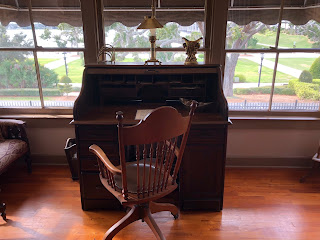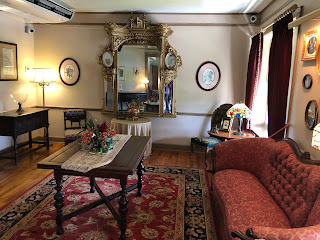In earlier posts, I've mentioned that Florida, in spite of its climate and many communities with bike lanes, is terrible for bicycling in at least one way. The Sunshine State is beclouded with the distinction of being the deadliest state for cyclists. For about as long as I've been writing this blog, Florida has had the highest death rate for riders, and it's not even close.
More than a few reasons have been posited. One is the state's car-centric culture. Another is that because it's America's leading state for retirees (a.k.a. God's Waiting Room), there are lots of old drivers, some of whom shouldn't be driving anymore. I think that characterization is only somewhat fair: While riding in Florida, I've encountered any number of hot-rodding, or simply careless, young drivers. Again, to be fair, their state doesn't have very stringent requirements for a driver's license.
Whatever the causes, the dangers (and pleasures) encountered by cyclists do not discriminate: Accidents injure the young and the old, the rich and the poor.
And the famous as well as the anonymous.
The latest cycling fatality in Florida was a familiar face for many people. He covered a number of major events, including the September 11 terrorist attacks. For his contributions to CNN's coverage of that event, he won an Emmy. Another highlight of his career, "Escape from Justice," was one of the first exposes of Nazi war criminals living in the USA.
In addition to CNN, he covered the Supreme Court and other legal issues for 22 years at ABC. An attorney by training, he was able to lend depth, as well as explain proceedings, in terms comprehensible to folks like me.
Upon his retirement, he moved to northeastern Florida, near Jacksonville. Like many before him, he relished the chance to spend days following one of his passions: cycling.
My guess is that Tim O'Brien was a careful cyclist and, for a 77-year-old, his reflexes were still good. They weren't enough, however, to avoid the fate that befell him.
According to police, a pickup truck traveling northbound on Route A1A turned left to Mickler Road in Ponte Vedra Beach. The truck collided with a car traveling southbound on A1A.
The force of the crash sent the car ricocheting to the sidewalk--where O'Brien was pedaling.
Both drivers remained at the scene. Police have not said whether either would be charged.
Whatever their fate, it won't change the fact that someone they might've watched on their television screens is the latest cyclist casualty in Florida.
![items.[0].image.alt](https://ewscripps.brightspotcdn.com/dims4/default/1ee7253/2147483647/strip/true/crop/1280x720+0+0/resize/1280x720!/quality/90/?url=http%3A%2F%2Fewscripps-brightspot.s3.amazonaws.com%2F5e%2F4f%2Facd46b2b4722862c1aa9b03313e0%2Figuana-caught-in-bicycle-tire-in-keys.jpg)









































